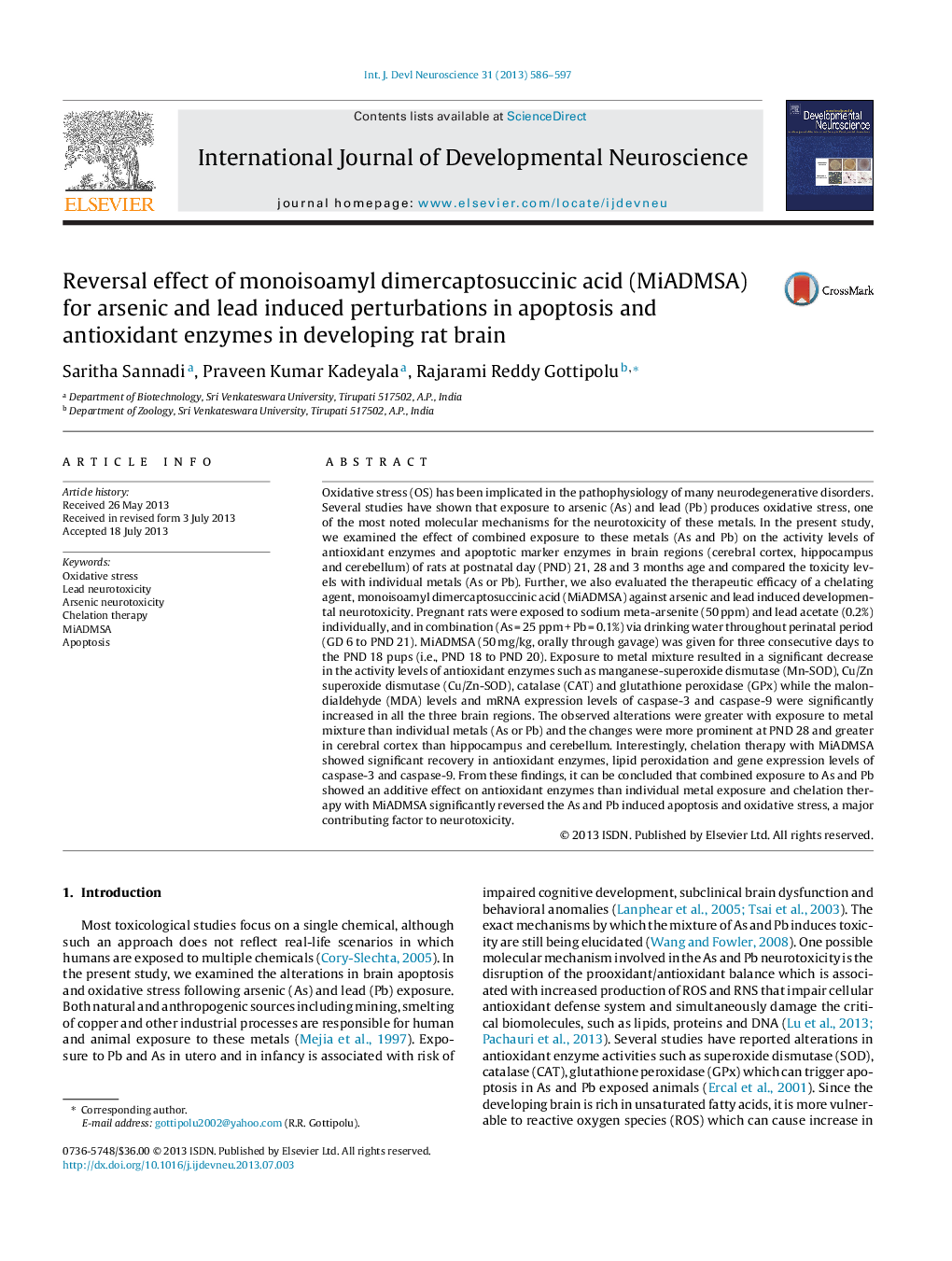| Article ID | Journal | Published Year | Pages | File Type |
|---|---|---|---|---|
| 5893925 | International Journal of Developmental Neuroscience | 2013 | 12 Pages |
Abstract
Oxidative stress (OS) has been implicated in the pathophysiology of many neurodegenerative disorders. Several studies have shown that exposure to arsenic (As) and lead (Pb) produces oxidative stress, one of the most noted molecular mechanisms for the neurotoxicity of these metals. In the present study, we examined the effect of combined exposure to these metals (As and Pb) on the activity levels of antioxidant enzymes and apoptotic marker enzymes in brain regions (cerebral cortex, hippocampus and cerebellum) of rats at postnatal day (PND) 21, 28 and 3 months age and compared the toxicity levels with individual metals (As or Pb). Further, we also evaluated the therapeutic efficacy of a chelating agent, monoisoamyl dimercaptosuccinic acid (MiADMSA) against arsenic and lead induced developmental neurotoxicity. Pregnant rats were exposed to sodium meta-arsenite (50 ppm) and lead acetate (0.2%) individually, and in combination (As = 25 ppm + Pb = 0.1%) via drinking water throughout perinatal period (GD 6 to PND 21). MiADMSA (50 mg/kg, orally through gavage) was given for three consecutive days to the PND 18 pups (i.e., PND 18 to PND 20). Exposure to metal mixture resulted in a significant decrease in the activity levels of antioxidant enzymes such as manganese-superoxide dismutase (Mn-SOD), Cu/Zn superoxide dismutase (Cu/Zn-SOD), catalase (CAT) and glutathione peroxidase (GPx) while the malondialdehyde (MDA) levels and mRNA expression levels of caspase-3 and caspase-9 were significantly increased in all the three brain regions. The observed alterations were greater with exposure to metal mixture than individual metals (As or Pb) and the changes were more prominent at PND 28 and greater in cerebral cortex than hippocampus and cerebellum. Interestingly, chelation therapy with MiADMSA showed significant recovery in antioxidant enzymes, lipid peroxidation and gene expression levels of caspase-3 and caspase-9. From these findings, it can be concluded that combined exposure to As and Pb showed an additive effect on antioxidant enzymes than individual metal exposure and chelation therapy with MiADMSA significantly reversed the As and Pb induced apoptosis and oxidative stress, a major contributing factor to neurotoxicity.
Related Topics
Life Sciences
Biochemistry, Genetics and Molecular Biology
Developmental Biology
Authors
Saritha Sannadi, Praveen Kumar Kadeyala, Rajarami Reddy Gottipolu,
